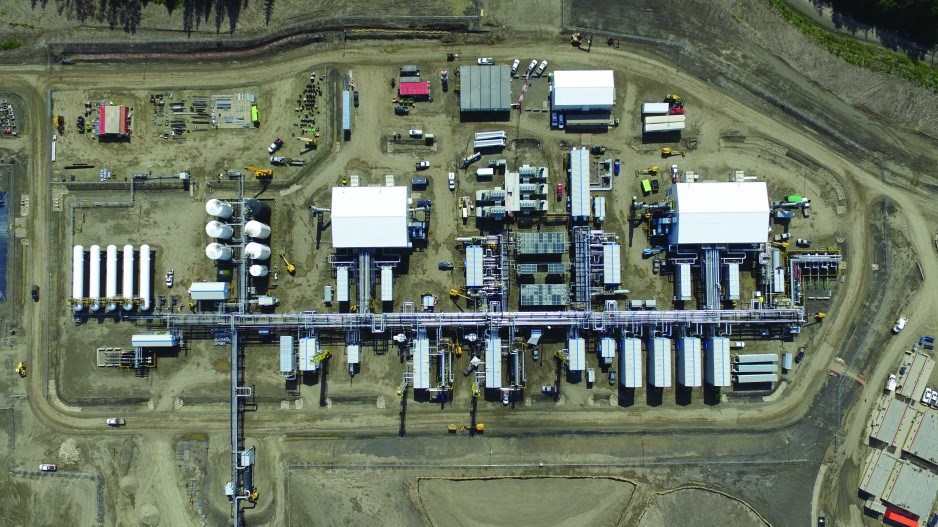Hundreds of millions of dollars are expected to start flowing into B.C. in 2017 in the form of energy infrastructure investments, from the Trans Mountain pipeline expansion to the Woodfibre LNG plant in Squamish to natural gas wells, pipelines and processing plants in northeastern B.C.
While there is still uncertainty around major liquefied natural gas (LNG) projects, some are hopeful a recovery in oil and natural gas prices will improve the chances of at least one major project getting a final investment decision in 2017.
In February 2016, oil prices bottomed out below US$30 per barrel, after an 18-month fall from US$100 per barrel. Natural gas prices fell below US$2 per million British thermal units (MMBtu) in 2015, but by the end of 2016 they had climbed to nearly US$3.50 per MMBtu.
Both oil and gas prices are moving back up, thanks to a cold winter and agreements by key oil-producing nations to cut oil production by about 1.7 million barrels per day.
“The outlook is definitely that both oil and gas are going to gain in 2017 on year-on-year average terms,” said Scotiabank Economics commodities analyst Rory Johnston.
Oil and gas companies are planning to ratchet up their drilling and investment in gas processing plants and pipelines in northeastern B.C. and northwest Alberta in 2017.
“In some ways, I think it’s going to be an incremental year,” said Tim McMillan, president and CEO of the Canadian Association of Petroleum Producers. “We will see the rebound. Instead of reducing capital expenditure repeatedly, we will start to see a bit of a rebound.”
The first energy project expected to have shovels in the ground in 2017 in B.C. is the $1.4 billion Woodfibre LNG plant in Squamish. Site remediation is expected to begin in the first quarter of 2017, with construction to start in earnest in the last quarter.
In the first quarter of 2017, Kinder Morgan Inc. (NYSE:KMI) is expected to make its final investment decision on the $6.8 billion Trans Mountain expansion, and it will begin construction in December 2017, barring any setbacks that might arise from court challenges.
For B.C., the biggest energy news of 2017 would be a final investment decision (FID) by Petronas on its $36 billion Pacific NorthWest LNG plant in Prince Rupert, or by Shell on its LNG Canada project in Kitimat. That is unlikely, according to a number of energy analysts, who say no large LNG project anywhere in the world is likely to get an FID in 2017, for reasons of supply and demand.
Stewart Muir, executive director for Resource Works, is more optimistic. He points to $1.5 billion in drilling planned for 2017 as a signal an FID could come.
“For those who don’t like to get their LNG predictions from politicians, look to drilling to tell you what the money is saying,” he said. “When the money is saying we’re spending $20 million a hole to invest in B.C. at a time when money is very tight, that’s important information to be considered.”
One wild card for major energy projects in B.C. could be played by the voters in May 2017. Should British Columbians elect an NDP government, all bets may be off. NDP leader John Horgan is opposed to both the Trans Mountain expansion and the Site C dam.
Construction of the $8.4 billion hydroelectric dam project on the Peace River got underway in 2016, with 1,868 workers employed as of October and $1.3 billion spent to date. In 2017, construction milestones will include building an 800-metre concrete buttress, the realignment of Highway 29 and building a substation and new transmission lines.




